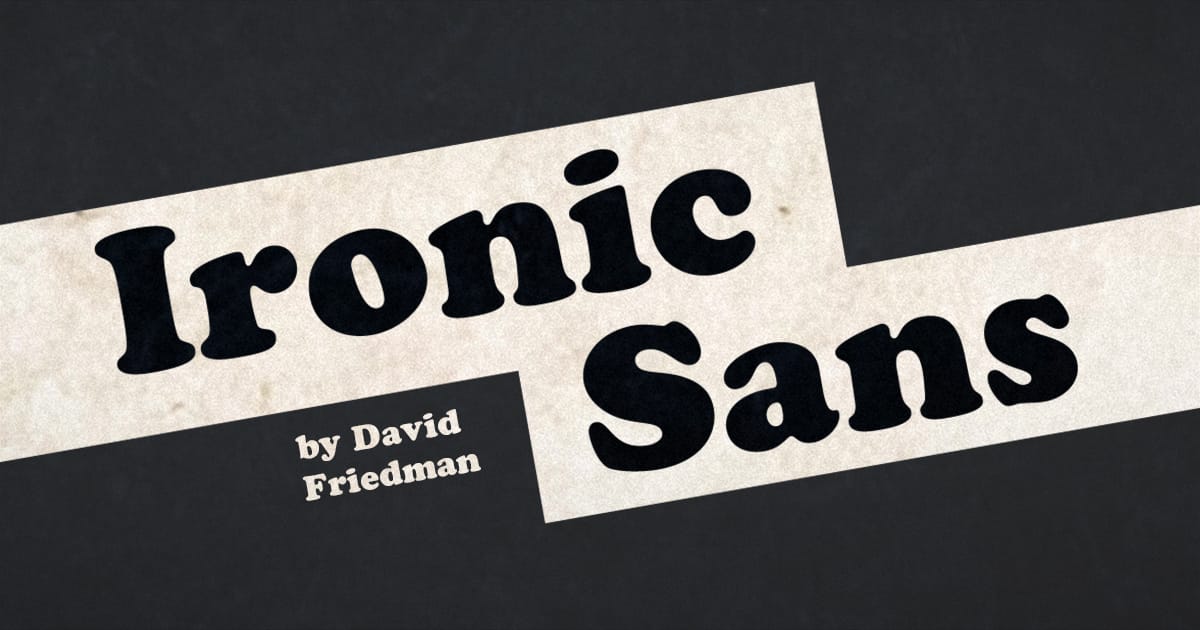The Trampoline on the Great Pyramid
Or: Lady and the Trampoline

Way over in a seldom-updated corner of the internet, you can find the Trampoline History Blog, written by a woman named Dagmar Munn, whose father George Nissen developed the modern trampoline.
George didn’t invent the first ever trampoline, but he popularized trampolines for sports and recreation from the 1950s through the 1980s, and came up with new designs and ways to use them. The stories Dagmar tells on her blog are a fascinating history of something I knew very little about. Many of the stories are told through the words of her husband Ron Munn, who worked with her father in the trampoline business.
The blog is a bit of a rabbit hole, with every click revealing something new and interesting.
Here are some things you’ll find at the Trampoline History Blog:
The Great Pyramid
One of the most incredible stories on the blog tells how George and Ron tried to get a trampoline up to the top of one of the Great Pyramids in Egypt.
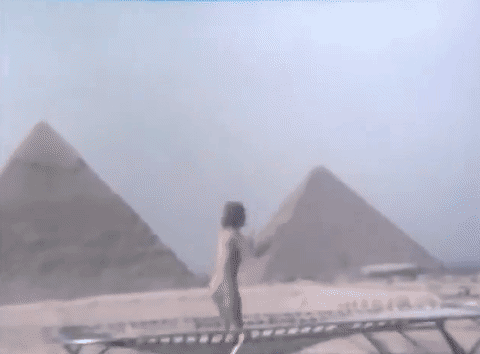
At some point in its history, the very top of the Great Pyramid of Khufu was taken off, supposedly by Napoleon if Ridley Scott is to be believed. Whatever happened, it left the top of the pyramid with a surface flat enough to set a trampoline on.
In 1977, since Ron and George were going to be in Egypt for a trampoline event anyway, they wondered if they could get one up to the top of the pyramid. They planned to climb to the top and arranged for a helicopter to lower the trampoline to them. But at the last minute, the pilot felt the weather wasn’t cooperative enough and bailed out.
So instead, they carried a mini-trampoline to the top of the pyramid, where 63 year old George Nissen did flips on the mini-trampoline.

That’s pretty amazing. But that wasn’t the dream. The dream was a full-size trampoline. So over several months they plotted how they could get a trampoline up to the top. Finally, a return trip to Egypt presented an opportunity.
Inspired by how the pyramid had been built one stone at a time, they came up with a way to bring a full size trampoline to the top of the pyramid in pieces, and assemble it there.
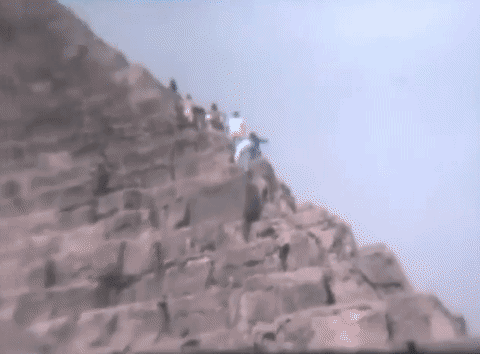
The plan worked.

Ron later wrote, “this attempt was certainly the first somersault ever turned on a trampoline atop the Great Pyramid of Khufu!”
You can read the whole story, written by Ron and with all its twists and turns and many great photos, in a five-part series on Dagmar’s blog.
Someone should make that story into a movie.
Trampoline Centers
When I’ve taken my kids to birthday parties at trampoline centers, I’ve actually been kind of jealous because they look so fun. But there was a short time in the 1950s where “Jump Centers” sprang up all over the country. They were so popular that even gas station owners were starting to set up trampolines at their gas stations! I guess that way your kids could get some pent up energy out while you’re filling up on a road trip? They should really bring that back.

Jump Centers were pretty photogenic, so tons of photos exist, and you can find a lot of great pictures on the blog. The craze even made the cover of LIFE magazine!
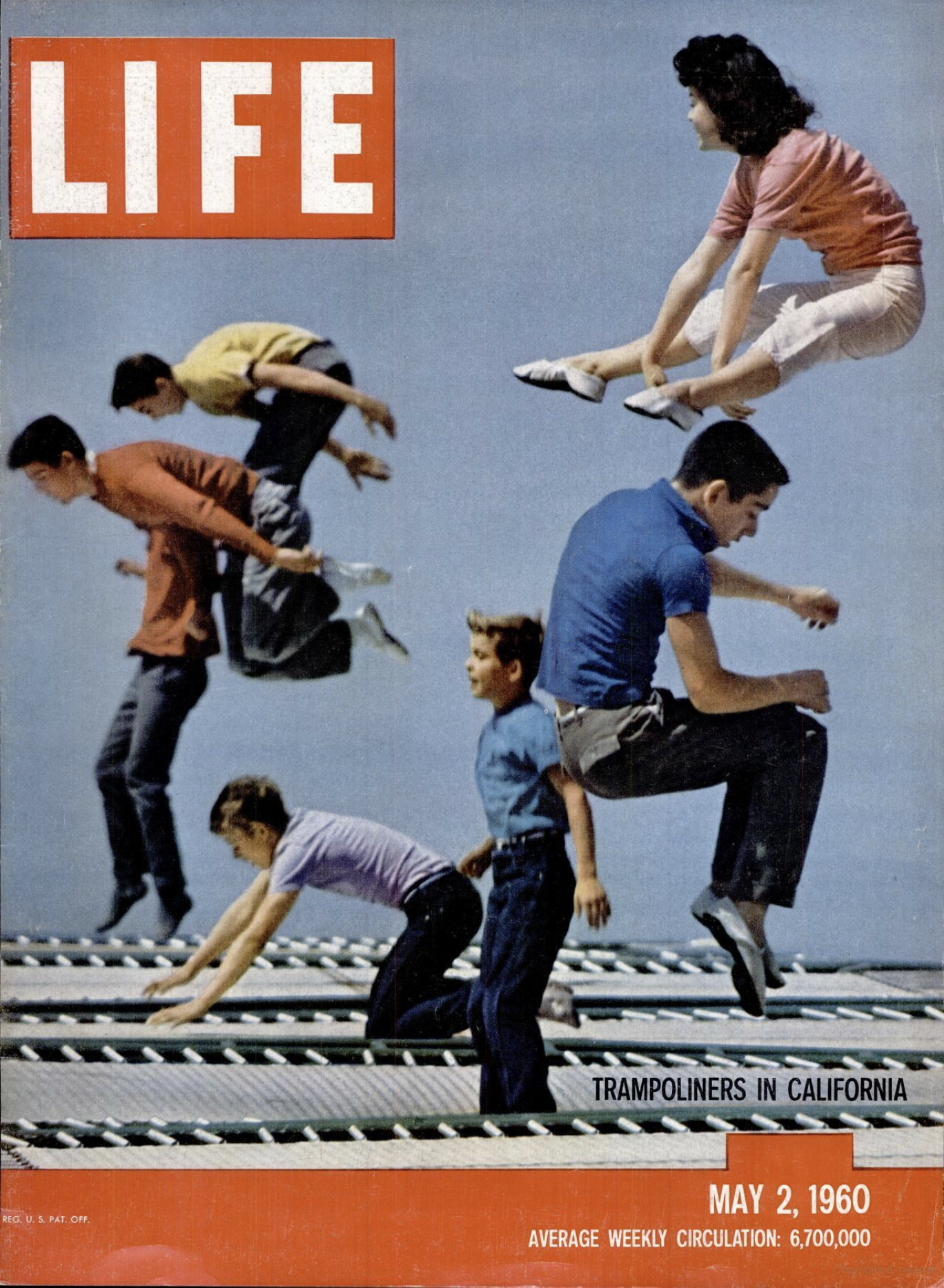
Vintage Videos
The blog has an associated YouTube channel with lots of vintage videos from trampoline’s emergence in popularity. The oldest one is from 1937 and shows high diver Larry Griswold incorporating a trampoline and a trapeze into his diving routine!
It reminds me a lot of the Triple Lindy.
And this clip from 1949 shows a great 31-bounce routine from a trampoline competition:
Here’s a bit of context from the video’s description:
Prior to 1948, early trampoline competition rules allowed each bouncer a full 2-minutes, which could be used for skills, intermediary bounces, or even dismounting the trampoline to consult with his coach before remounting and completing the time period.
By the time the 1949 NCAA Trampoline Championships were held, the rules changes to limited competitors to a 31-bounce routine.
Edsel “Ed” Buchanan, hailing from Amarillo, Texas, was the first to connect all this skills together in what was called SWINGTIME. Representing the University of Michigan men’s gymnastics team, Ed won the NCAA title on trampoline in 1949, 1950 and 1951.
Company Newsletters
Dagmar has a second blog where she’s archived a history of the Nissen Company’s internal newsletters, the Nissen News, from 1957 to 1980. It’s a quaint bit of ephemera preserved for the world to see, and it makes Nissen look like a fun place to work.
Which reminds me: Congratulations to George in accounting’s son Danny, who won first place in the “Big Wheel” division at the Merchant’s National Bank bike races in 1977 in Cedar Rapids, Iowa.
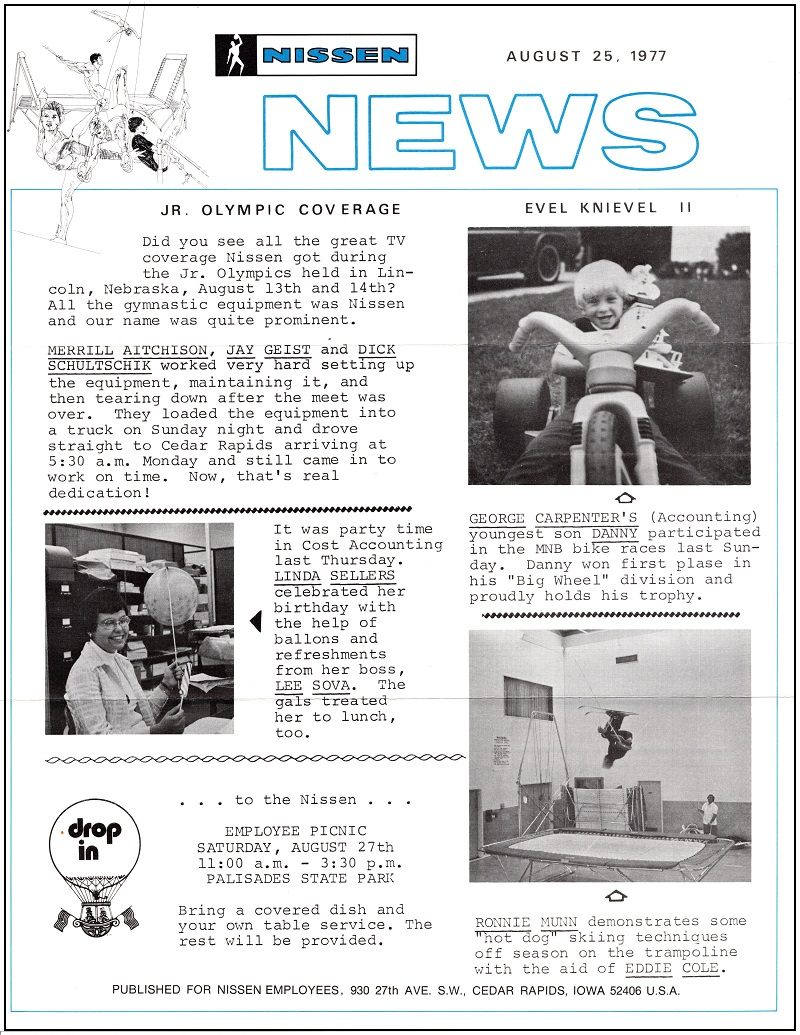

Dagmar Herself
Dagmar, who runs the blog and its spin-off blogs, was a jumper herself. She and others in her family used to perform as a trampoline act called The Nissens. Today, she writes about how she lives with ALS on the website ALS News Today.
And amazingly, she still jumps! In fact, she uses a trampoline as part of her ALS therapy. She recently posted this on Facebook:
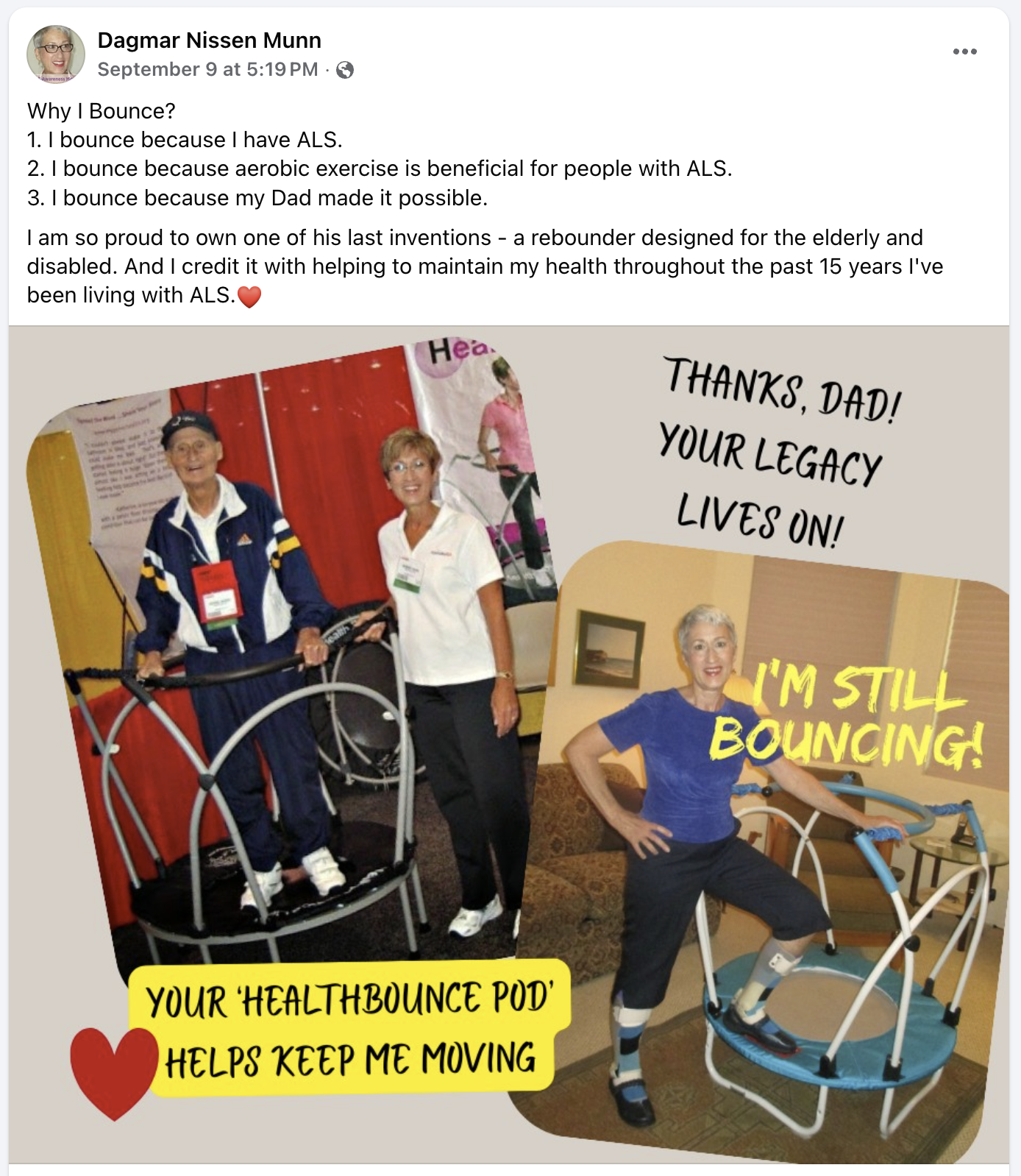
Keep bouncing, Dagmar!

You know, one thing I don’t really talk about here often is my archive. I think of my writing as being primarily for my regular readers and secondarily for someone who discovers Ironic Sans for the first time and goes down a rabbit hole to see what else I’ve written about. So I try to write mostly evergreen content that could be enjoyed any time.
I’m thinking of that today because trampolines have made me think of this website’s “bounce rate” – the percentage of people who come to just one page and then leave. I don’t know what the bounce rate is, but it’s probably pretty high. Or low? Whichever one is worse.
Of course, if you get my newsletter in your Inbox, or follow the RSS feed, bounce rate doesn’t apply since you don’t visit the site to begin with (although you really should browse the archive if you never have). But if you’re new around here and visiting the website, maybe you want to look around. You’re sure to find something you like.
And that’s it for another newsletter! Thanks as always for reading. See you next time!
David
